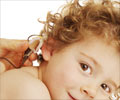- Baby talk - (http://en.wikipedia.org/wiki/baby_talk)
About
'A smart mother makes often a better diagnosis than a poor doctor.' - August Bier (German surgeon)
Motherese refers to the simplified and repetitive type of speech combined with exaggerated intonation and rhythm, generally used by mothers and baby caretakers when speaking to babies. The language used involves simplified vocabulary, melodic intonations and higher pitch, repetitive questioning and a slow and deliberate tempo. Other terms used to refer this kind of child-directed speech are parentese, “mommy talk” and “daddy talk”, infant-directed speech and caretaker speech.

This kind of speech is also used by siblings, older children, adults or anyone talking to an infant or a small child. The language and the intonations used help the child to identify the beginning and ending of words and also provide clues to help them acquire the language. The child-directed talk is usually directed from newborn infants to the children aged around 3 years.
The pattern of Motherese is universal and is spoken across most countries and cultures while talking to infants, instinctively, without actually being aware of doing it.
The Infant's Response to Motherese
The child is exposed to the mother's voice from the prenatal period, when the intonation and pitch of the mother’s voice are recognized better by the fetus than her specific speech sounds. After birth, the speech sounds are accompanied by the show of love and affection and is followed by attention to the infant’s needs. This combination can be the best kind of stimulation the little one gets to make it aware and attentive to its surroundings. Infants have been found to recognize motherese by about five-weeks of age, as they responded to their mothers speaking in higher intonations by increased sucking, as compared to response to a flat and monotonous speech of the mother. Infants have been found to pick up the vocal intonations and base their babbling (Ga Ga Goo Goo sounds) at the age of about 18 months, on these intonations.

Characteristics of Motherese
Motherese is generally characterized by the patterns in terms of mannerisms, speech, language, grammar and voice modulations.
Mannerisms
- Mother directly looks at the child while speaking
- Visual movements of the face are exaggerated
Voice and speech
- Clear articulation and exaggerated mouth movements are used
- High pitch, exaggerated intonations and rhythm are used
- Varied loudness levels
- More fluency in the sentence
- Fewer word rate (number of words per minute)
Vocabulary
- Usage of restricted vocabulary, introducing new words deliberately
- Longer pauses between utterances and after content words
- Use of special words and sounds like choo-choo (train), doggy (dog), yucky (disgusting), etc
- Repetitive sounds like ba-ba (bottle), mama, dada (daddy), pee-pee (urinating)

Context
- Concrete references to here and now, rather than talking about past
- More contextual support (as big as this cupboard)
- Meaningful sentences with reference to the current action or object
- More well-formed and intelligible (clarity in speech) sentences
Language and grammar
- Questions to look out for feedback (You are a good girl, aren’t you?)
- Slow speech flow
- Simple or incomplete sentences (Mommy coming)
- Use of full names instead of pronouns (Did Sam eat it? It’s in Sam’s tummy.)
- Repetitions and paraphrasing (Dolly is a pretty, pretty, pretty girl. Aren’t you pretty?)
- Expansion and extension of the sentences spoken by the child (Yes, that’s big and beautiful)

Benefits of Motherese other than Language Development
The mother-to-child bonding is much better when there are a lot of verbal interactions between them. The child responds to the mother by looking at the object or the mother’s actions and expressions. These interactions also facilitate cognitive development and improve knowledge about the surroundings. For example, the mother says, “That’s a large, blue ball” instead of “That’s a ball”. The emotional development is better due to encouragement and the child grows up to be more confident and inquisitive.
Absence of Motherese during Early Years of Growth
Recent research suggests that the absence of face-to-face interactions between the infants and their depressed mothers have caused disturbances in emotional, cognitive and social development. Depressed mothers usually are not able to modify their behavior in tune with the infant, may be slower to respond to an infant vocalization, have more variable utterances and pauses, and are less likely to utilize the exaggerated intonation patterns that are typical of motherese.

Understanding Motherese
Understanding Motherese is essential to be used while working towards helping a child with delayed speech and language development improve on language acquisition. The delay could be due to various reasons like mental retardation, exposure to many languages in early years, lack of interaction of the child with adults and so on.
Motherese may be helpful in language development in an infant, but it is not imperative for the process of language acquisition. The expressions, attention and the visual cues of the mother encourage the child to participate in the conversation fostering the language acquisition. Infants are seemingly attracted, not only to the manner of motherese, but also to the people who use the speech pattern.










